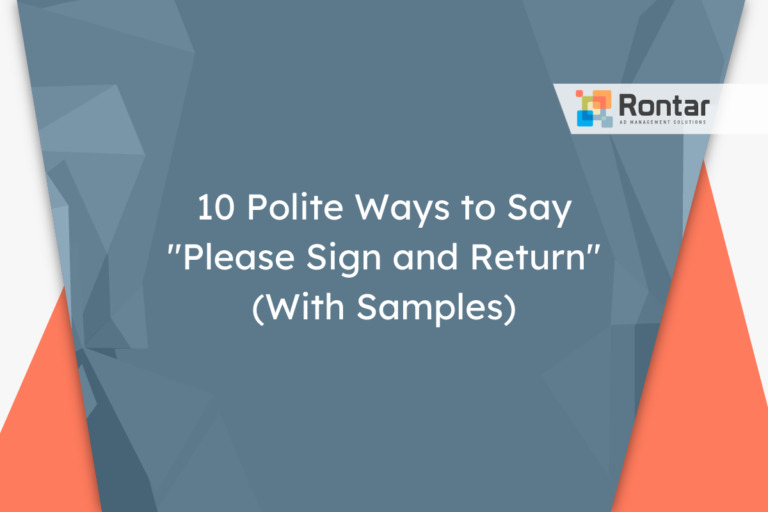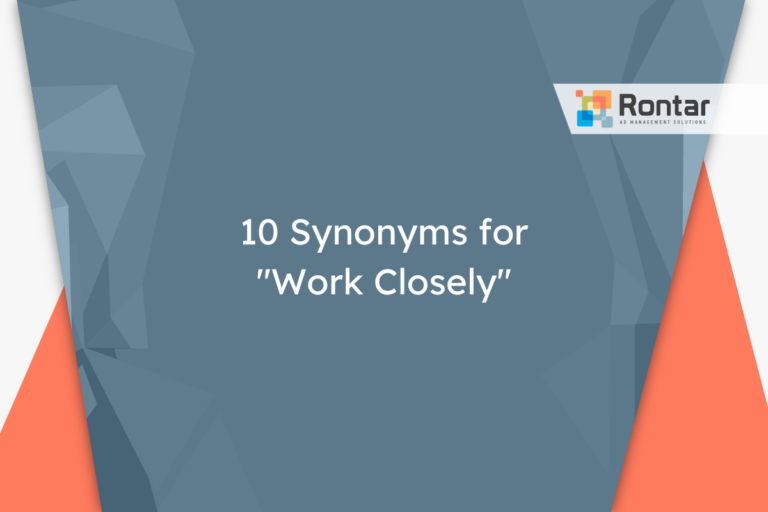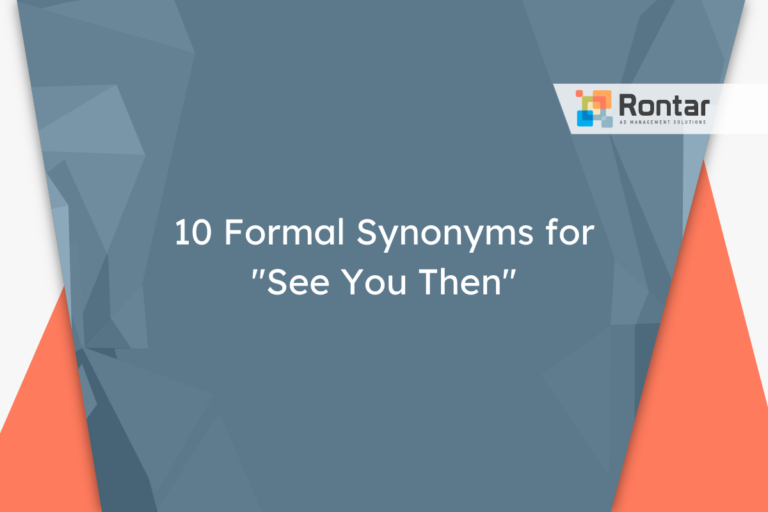10 Professional Ways to Say “Many Thanks”

In the professional world, saying “thank you” is more than just good manners—it’s a way to build relationships and show appreciation. But using the same phrase over and over can become stale.
This article introduces ten alternatives to the phrase “many thanks” that can be used in professional emails. Each option suits different levels of formality and types of professional interactions, ensuring your gratitude is both felt and appreciated.
Is It Professional to Say “Many Thanks” in an Email Sign-Off?
Using the phrase “many thanks” in an email sign-off can be seen as professional, formal or informal, and polite. Generally, “many thanks” adds a touch of gratitude and can be appropriate in various communication settings.
This phrase is particularly fitting in scenarios where you wish to express sincere appreciation or gratitude. It works well with all types of recipients, from colleagues and clients to friends and acquaintances, and is suitable across various communication mediums, including emails, letters, and notes.
Here is a short example:
Dear Michael,
Thank you for providing the reports on time. Your effort greatly assisted in the timely completion of the project.
Many thanks,
Alice
Pros:
- Conveys gratitude effectively.
- Appropriate for both formal and informal settings.
- Short and to the point.
Cons:
- May be perceived as overly casual in very formal contexts.
- Lacks specificity in expressing the reason for gratitude.
Despite its versatility, someone might consider using an alternative phrase to “many thanks” to either match the level of formality of the correspondence more closely or to convey a more specific or varied form of appreciation.
10 Other Ways to Say “Many Thanks”
If you’re looking to mix up the way you express gratitude in your professional emails, here are ten alternative phrases that convey the same appreciation as “many thanks” without being overly formal:
- With appreciation
- Thanks a bunch
- With gratitude
- Thank you kindly
- Greatly appreciated
- Thanks a million
- With heartfelt thanks
- Much appreciated
- Warm thanks
- Sincere thanks
1. With appreciation
This alternative feels professional and is slightly more formal than “many thanks.” It conveys a sense of genuine gratitude and respect towards the recipient. This phrase works well in messages where you want to underscore the value of what was received or the effort made by the other party.
It is better suited for professional emails and letters, especially when addressing colleagues, clients, or superiors. The phrase fits perfectly in both digital and paper correspondence, maintaining a tone that is both polite and appreciative.
Example:
Dear Thomas,
Your feedback on the project proposal was invaluable to refining our approach.
With appreciation,
Emily
2. Thanks a bunch
This phrase is more informal than “many thanks” but still acceptable in less formal professional settings. “Thanks a bunch” adds a friendly touch to the message, making it suitable for correspondences where you have a more relaxed relationship with the recipient.
Use this alternative in emails to colleagues you’re familiar with or in situations that don’t require strict formality. It’s perfect for messages within teams or with peers in a less formal working environment.
Example:
Dear Alex,
I really appreciate your quick response to the IT issues we faced this morning.
Thanks a bunch,
Jordan
3. With gratitude
“With gratitude” is highly professional and conveys a level of formality that is suitable for most workplace environments. This synonym of “many thanks” carries a tone of solemn appreciation and respect.
This alternative is better suited for messages to people you respect deeply or when the favor done for you has had a significant impact. It’s excellent for both emails and formal letters to clients, superiors, or external partners.
Example:
Dear Mrs. Henderson,
Your mentorship has played a critical role in my professional development.
With gratitude,
Liam
4. Thank you kindly
This phrase leans towards the formal side and is imbued with a sense of warmth and sincerity. It’s a polite way to express gratitude, suggesting a closer, more personal acknowledgment of the recipient’s effort or contribution.
“Thank you kindly” is excellently suited for professional contexts where there’s a sense of personal rapport. It works well in emails, letters, or even in verbal communication with clients, colleagues, or superiors you share a friendly relationship with.
Example:
Dear Hannah,
I received the documents you sent over. They were exactly what we needed for the meeting.
Thank you kindly,
George
5. Greatly appreciated
This alternative is professional and directly acknowledges the recipient’s contribution or help. The phrase is formal enough to be used in all professional settings and conveys a strong sense of appreciation.
This sign-off is suitable for emails and letters where you want to express gratitude for a significant contribution. It’s appropriate for all types of professional correspondents, from clients to superiors and external partners.
Example:
Dear Simon,
The insights from your market analysis report will greatly aid our strategy development.
Greatly appreciated,
Natalie
6. Thanks a million
“Thanks a million” adds a vibrant and somewhat informal twist to showing gratitude. Though not overly formal, it still holds a professional edge when used in the right context. This phrase conveys a high level of appreciation and is a hyperbolic expression of thanks.
This alternative is better suited for internal communications or when addressing colleagues with whom you have a friendly rapport. It’s ideal for emails or messages that benefit from a lighter, more personal tone.
Example:
Dear Becky,
Your last-minute help on the project pitch was a lifesaver.
Thanks a million,
Mike
7. With heartfelt thanks
This sign-off is deeply personal and formal, suggesting a sincere and strong sense of gratitude. “With heartfelt thanks” is perfect when you are profoundly thankful and want to convey your emotions clearly.
It is especially suited for correspondences that are personal in nature or when thanking someone for a personal favor. It works well with colleagues, mentors, or clients you have developed a close and respectful relationship with.
Example:
Dear Mr. Jenkins,
Your support during the project's critical phase made a significant difference in our success.
With heartfelt thanks,
Diana
8. Much appreciated
This phrase is succinct, professional, and formal, making it a versatile alternative. “Much appreciated” is straightforward and directly emphasizes the appreciation of the person’s efforts or contributions.
It’s an excellent choice for any professional email or letter, suitable for communicating with a wide range of recipients, including clients, colleagues, and superiors. This alternative maintains a balance between formality and the personal touch of gratitude.
Example:
Dear Oliver,
The detailed feedback you provided on the proposal was invaluable.
Much appreciated,
Rachel
9. Warm thanks
This sign-off strikes a balance between being formal and personal, imparting a sense of warmth in the gratitude expressed. “Warm thanks” suggests a friendly appreciation and is suitable for both professional and personal messages.
Appropriate for emails to colleagues and clients alike, especially those you have a friendly relationship with. It conveys gratitude in a way that is polite yet feels personal and sincere.
Example:
Dear Vanessa,
Your recommendation was pivotal in our team choosing the right software solution.
Warm thanks,
Terry
10. Sincere thanks
“Sincere thanks” is a formal and professional way to convey gratitude. It emphasizes the genuineness of the appreciation. This phrase works well in situations where you want to clearly articulate your thanks without any ambiguity.
It is ideally suited for communications with higher-ups, new clients, or external partners. “Sincere thanks” is perfect for letters, emails, and even presentations where gratitude needs to be expressed professionally and earnestly.
Example:
Dear Carly,
Your guidance on navigating the regulatory requirements was crucial for our project timeline.
Sincere thanks,
Luis
Final Thoughts
Choosing the right way to say “thank you” in your professional emails can make a big difference in how your message is received. With the ten alternatives provided, you have a variety of options to express your gratitude that match the tone and formality of your workplace interactions. These alternatives not only help keep your emails fresh but also demonstrate thoughtfulness and appreciation.






